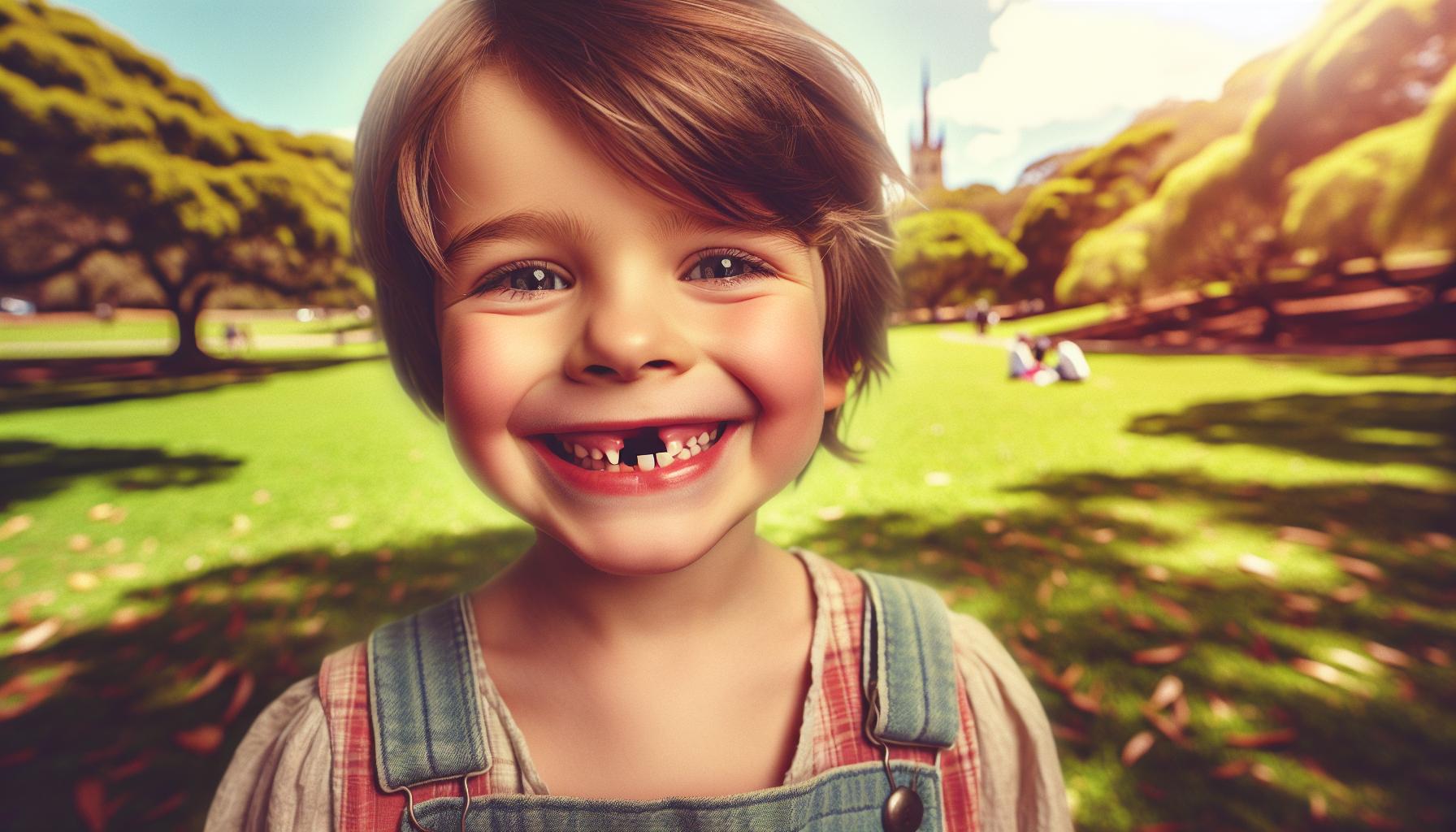
What Age Do Kids Lose Teeth? A Guide for Parents
The journey of losing baby teeth is a significant milestone in a child’s development. Typically starting around the age of six, this natural process not only marks their transition to adulthood but also raises questions for parents about dental health and care. Understanding why and what age do kids lose teeth can help parents navigate this exciting stage with confidence and ease.
Overview of Tooth Loss in Children
Tooth loss in children typically starts between the ages of six and seven. This stage, known as exfoliation, marks the transition from baby teeth to permanent teeth. The primary teeth serve a crucial role in speech development and chewing. As children grow, their jaws expand, allowing permanent teeth to emerge.
The first teeth to fall out are usually the incisors, particularly the lower central incisors, followed closely by the upper central incisors. By age 12, most children will have lost all their primary teeth, replaced by a full set of permanent teeth.
Parents might notice changes in their children’s behaviour during this time. Some children experience anxiety or excitement about losing teeth. It’s essential for parents to offer reassurance and maintain a positive outlook on the process.
Understanding the timeline and signs of tooth loss enables parents to support their children’s dental health effectively. Regular dental check-ups play a vital role in ensuring that any underlying issues are addressed promptly. Maintaining proper oral hygiene, including brushing and flossing, remains crucial even as teeth begin to fall out.
Developmental Stages of Teeth

The development of a child’s teeth occurs in distinct stages. Understanding these stages helps parents grasp the timing of tooth loss and replacement.
Primary Teeth Eruption
Primary teeth, also known as baby teeth, emerge around six months of age. Typically, a child will develop 20 primary teeth, which include:
- Central incisors: These appear first, usually starting at six to eight months.
- Lateral incisors: These follow, typically emerging between nine to 13 months.
- Canines: Canines generally come in around 16 to 22 months.
- Molars: The first molars appear around 13 to 19 months, followed by the second molars at 25 to 33 months.
These teeth play a crucial role in speech, nutrition, and the proper alignment of permanent teeth.
Timeline for Losing Primary Teeth
The timeline for losing primary teeth starts around age six. The process of exfoliation usually progresses as follows:
- Lower central incisors: These are typically the first to fall out between ages six and seven.
- Upper central incisors: These usually follow, typically falling out between ages seven and eight.
- Lateral incisors: Generally lost around ages eight to nine.
- Canines: These teeth often remain until ages nine to 12.
- Molars: The primary molars typically are lost between ages ten and 12.
Most children will have lost all primary teeth by age 12, making way for their permanent set.
Factors Influencing Tooth Loss
Tooth loss in children is influenced by several factors, including genetics and dietary habits. Understanding these can help parents support their children’s dental development effectively.
Genetics and Heredity
Genetics play a significant role in determining the timing of tooth loss. If parents experienced early or late tooth loss, it’s likely their children will follow a similar timeline. Genetic factors can also influence the number and development of teeth, possibly leading to variations in when and how teeth fall out. Research indicates that hereditary traits can affect dental health, shaping a child’s overall experience during this developmental stage.
Diet and Oral Hygiene
Diet directly impacts dental health and the loss of baby teeth. A diet rich in calcium and vitamins promotes healthy tooth development, while excessive sugary foods can lead to decay and complications. Adequate oral hygiene practices, such as regular brushing and flossing, are vital. Poor hygiene can result in dental issues that may disrupt the natural timeline of tooth loss. Encouraging children to maintain a balanced diet and practice good oral care supports a smoother transition from primary to permanent teeth.
Common Concerns and Myths
Understanding dental milestones can help ease parental concerns. Many believe children lose teeth at the same time, but this process varies. Genetics largely dictates the timing, meaning siblings may not follow identical patterns.
Myth: Losing teeth signals dental problems. In reality, tooth loss is a natural phase linked to growth. Healthy primary teeth fall out to make space for permanent ones. Dental health remains essential throughout this period; regular check-ups help monitor development.
Concern: Some parents worry about children feeling pain. While discomfort is possible, most children experience mild sensations. Encouraging a calm approach aids in managing emotions.
Myth: If teeth fall out early, they indicate issues. Early tooth loss might result from trauma or decay. Maintaining good oral hygiene practices can prevent problems that disrupt the natural timeline of tooth loss.
Concern: Diet plays a significant role in teeth health. Balanced nutrition, including fruits, vegetables, and dairy, supports healthy growth. Limit sugary snacks to reduce the risk of cavities, which can lead to premature tooth loss.
Addressing these myths and concerns through knowledge simplifies this transitional phase. Understanding the natural progression of tooth loss reassures parents and promotes a positive experience for children.
Tips for Parents
Parents play a vital role during their child’s transition from primary to permanent teeth. Understanding the process and supporting their child can ensure a smooth experience.
Encouraging Dental Care
Encouraging dental care begins with establishing a routine. Parents should guide their children in brushing twice daily with fluoride toothpaste, emphasising a thorough technique. Flossing reinforces oral hygiene by removing food particles between teeth. Regular dental check-ups every six months, regardless of discomfort, allow for early detection of issues. Discussing the importance of a balanced diet rich in calcium and vitamins promotes healthy tooth development. Offering positive reinforcement when children maintain good dental habits fosters long-term commitment.
Managing Discomfort
Managing discomfort during tooth loss requires attention and support. Parents should reassure their children that mild aches or sensitivity are normal. Cold compresses or over-the-counter pain relievers can alleviate discomfort if necessary. Providing soft foods, such as yogurt or applesauce, makes eating easier. Engaging children in calming activities, like reading or drawing, diverts their attention away from any pain. Open communication enables children to express their feelings, helping parents identify when additional support might be needed.
Conclusion
Losing baby teeth is a significant milestone in a child’s growth and development. Understanding the timeline and process empowers parents to navigate this transition with confidence. From the first tooth lost around age six to the full set of permanent teeth by age 12, each stage plays a vital role in a child’s oral health.
Addressing common concerns and myths helps create a positive experience for both children and parents. By promoting good dental hygiene and a balanced diet, families can support healthy tooth development. This journey not only marks physical growth but also offers opportunities for bonding and reassurance, making it a memorable chapter in childhood.
Frequently Asked Questions
At what age do children typically start losing their baby teeth?
Children usually begin losing their baby teeth around the age of six. This process, known as exfoliation, marks a significant milestone in a child’s development as they transition towards adulthood.
How many baby teeth do children have?
Children typically have a total of 20 primary teeth. These teeth develop in a specific order and include central incisors, lateral incisors, canines, and molars.
What is the order in which baby teeth are lost?
The first teeth to be lost are usually the lower central incisors, followed by the upper central incisors, lateral incisors, canines, and finally, the primary molars, which are typically lost by age 12.
What should parents do to support their child’s dental health during this time?
Parents can support their child’s dental health by establishing a routine of brushing twice daily with fluoride toothpaste, scheduling regular dental check-ups, and encouraging a balanced diet rich in calcium and vitamins.
Are there myths about losing baby teeth that parents should be aware of?
Yes, common myths include the belief that children lose teeth simultaneously or that tooth loss indicates dental issues. In reality, the timing varies and is a natural part of growth.
What signs indicate a child is about to lose a tooth?
Signs that a child may be about to lose a tooth include slight mobility of the tooth, mild discomfort, and changes in the appearance of the gum area surrounding the tooth.
How can parents help manage discomfort during tooth loss?
To manage discomfort, parents can reassure children that mild aches are normal, use cold compresses, provide over-the-counter pain relievers, and offer soft foods to ease eating.
Why is good oral hygiene important during the transition to permanent teeth?
Good oral hygiene is crucial to prevent dental issues, such as cavities or decay, which can disrupt the natural timeline of tooth loss and affect the development of permanent teeth.

